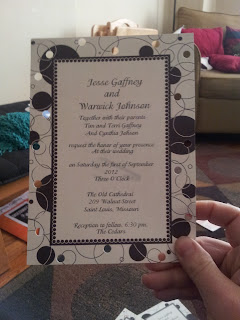In the four shows that I have done with a certain theatre company, I have always found myself having trouble with the actors. They don't seem to know how to handle their props, they don't speak to technicians with any respect, and there are more than the usual number of divas.
On the most recent production with this company I found what I believe to be the source of this problem.
We were looking for a space for a crossover for the actors backstage. There was plenty of space behind the large cyc, but none of it was ideal. We were using large cyc lights to back-light the drop; if the actors passed in front of the lights they would cast shadows, but if they passed behind they had to deal with a large number of cables as trip hazards. After seeing some spare sheets of masonite/hardboard backstage, I suggested that we lay the sheets end to end behind the lights, Gaff tape them together and gaff tape them to the floor, to create a bridge over all of the cables.
"No," The production manager responded, "what if the actors kicked the lights while passing behind them."
I stared at the 4'-0" wide pathway I was proposing and was confused, it seemed plenty wide enough to me, " We could lay down a white tape line on the front 1'-0" of the masonite and tell the actors to stay behind the line," I offered, "that would keep the actors well away from the lights."
"No," I was told again, "actors are stupid, they will find a way to break things." The assistant stage manager, stage manager, and production manager were all in agreement.
I was shocked, but suddenly I understood why I had all of the problems that I did with the actors at this company; they didn't behave intelligently or respectfully because they were not treated with respect and were assumed to be unintelligent. They didn't know how to handle their props, because the stage manager assumed they were stupid, and didn't bother to explain things to them. I discovered later that day that while I had taken the stage manager aside to carefully explain all the changes that had been made going into first tech, she had never bothered to pass any of that information on to the actors who were using the props.
So for the record, and for all those theatre artists who may be holding ignorant opinions, actors are not stupid. I have encountered this type of attitude among high-schoolers sometimes, and once in a while with a frustrated college student, but I was shocked to discover this attitude among seasoned professionals. I would have thought that someone who held this type of opinions would have gone onto an alternate career pretty quickly.
I will say it again, actors are NOT stupid. Actors have a lot to focus on during a performance. They need to be thinking about their next scene, their next costume change, their choreography and their lines. Props, costumes, sets and special effects need to be straightforward, and predictable. They need to work the same way every time. If there might be complications, or if the piece might fail in some way, they need to be informed, and they need to be told what they should do if the piece does fail. Actors are not stupid, but with the dozens of things they need to be remembering at any given moment, in addition to our expectation that they be tuned into their emotions and making the character come to life, they can sometimes have trouble focusing on the complexities of a technical element that needs to be incorporated.
"Don't get too close to the lights" might be a bit subjective and vague, they might need to know more about how the lights are wired and bolted down in order to understand how close is too close. "Stay behind the white line" is more clear; it can be quickly, visually processed and allow the actor to move on to focusing on the performance.
Actors are not stupid, but they do need clear communication and instruction. If you can't explain what you need them to do with a prop, costume, or special effect in three easy steps, it's too complicated. The actors will never know as much about props as a props master, or as much about clothing as a costumer, and they should not be expected to, that is your job. Calling actors stupid because you are having difficulty creating an effect that works simply and consistently is an easy excuse. Push yourself to find new solutions or to more effectively troubleshoot the ones you have. Remember a piece might be easy for you to operate, not because it is easy, but because in creating it, you became intimately familiar with it's construction.
And if you are still convinced actors are stupid, at the very least keep your opinion to yourself. You never know when you are making a bad impression on someone like me.

























